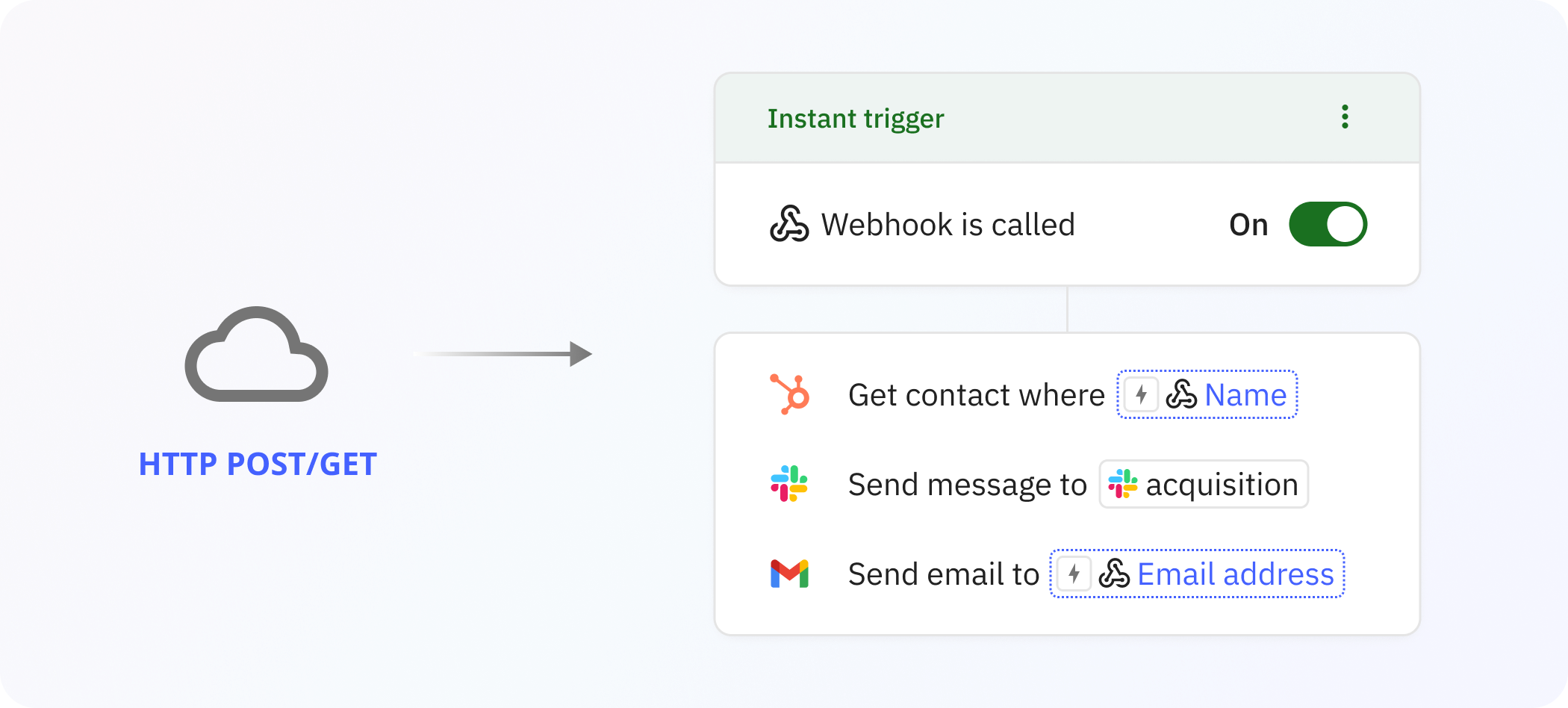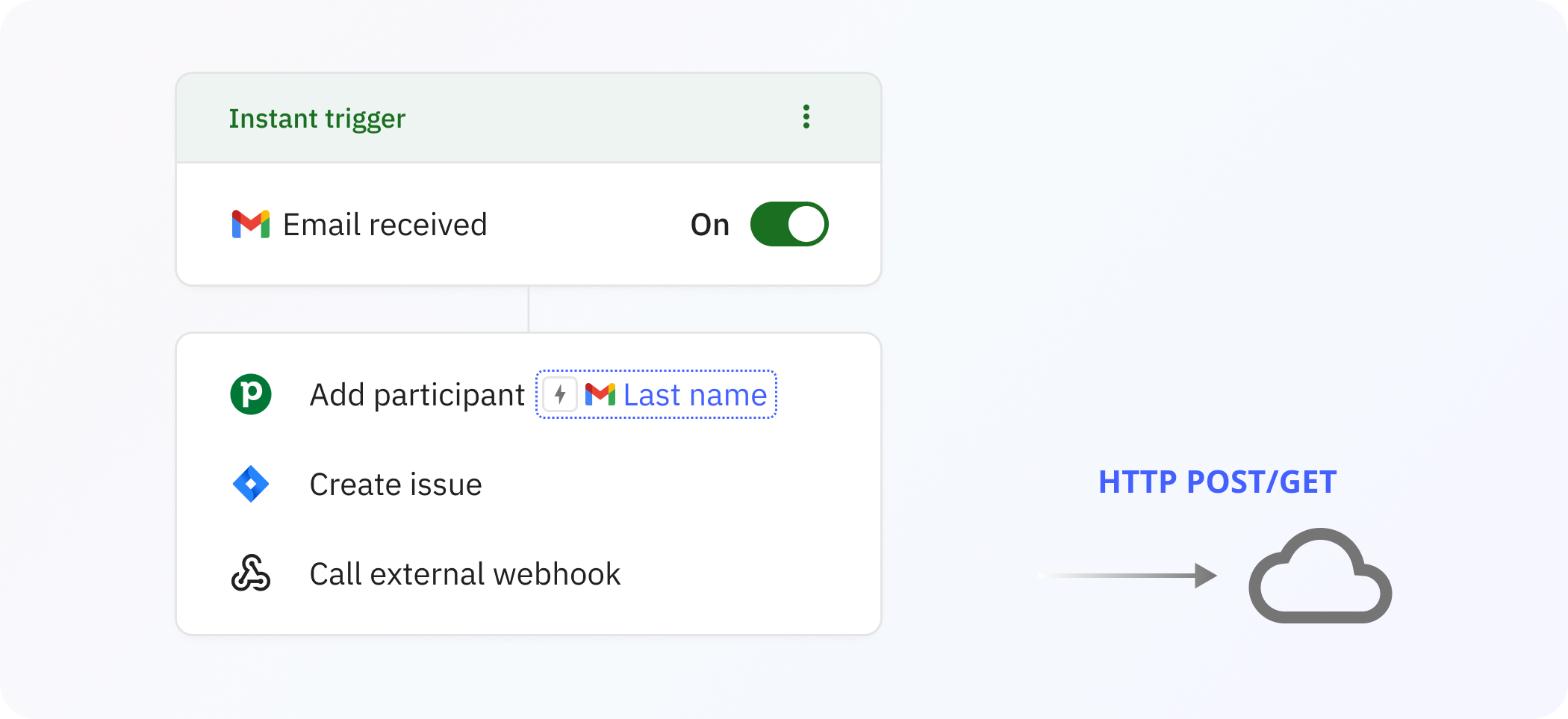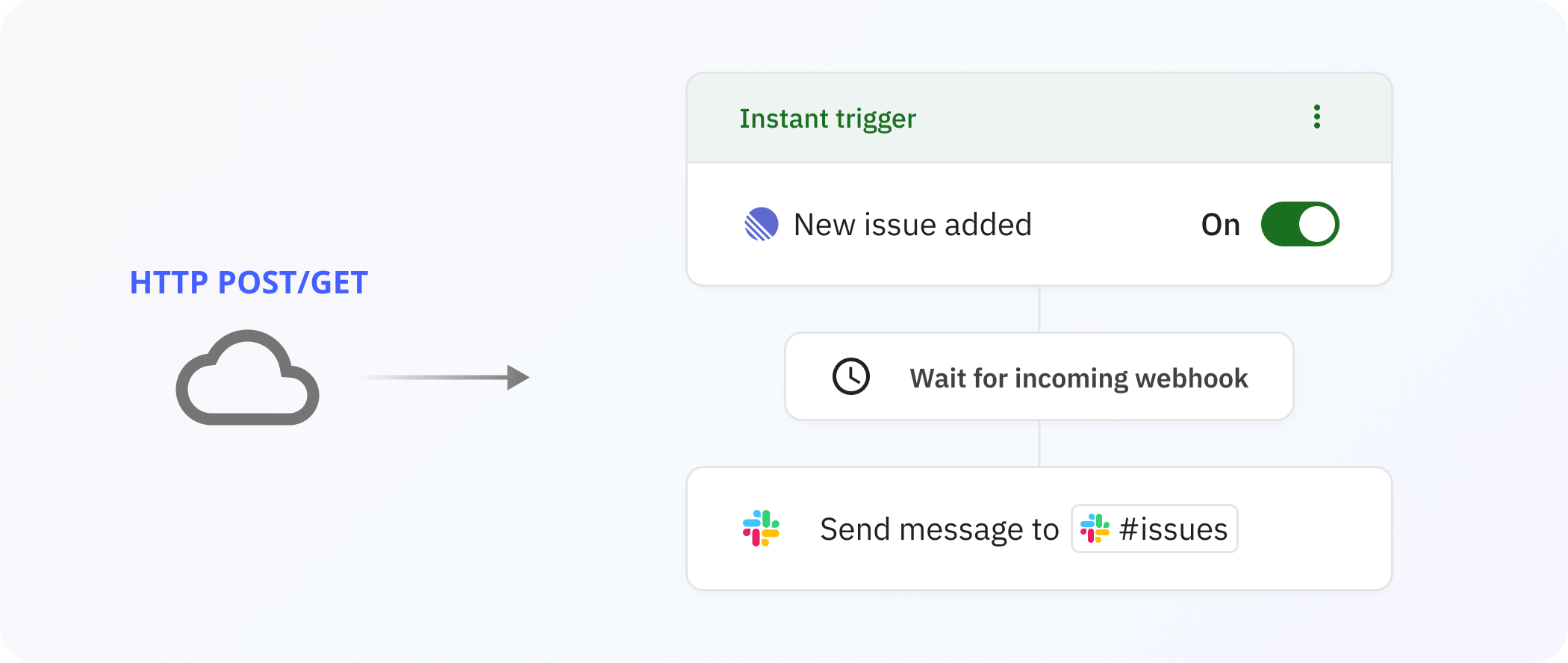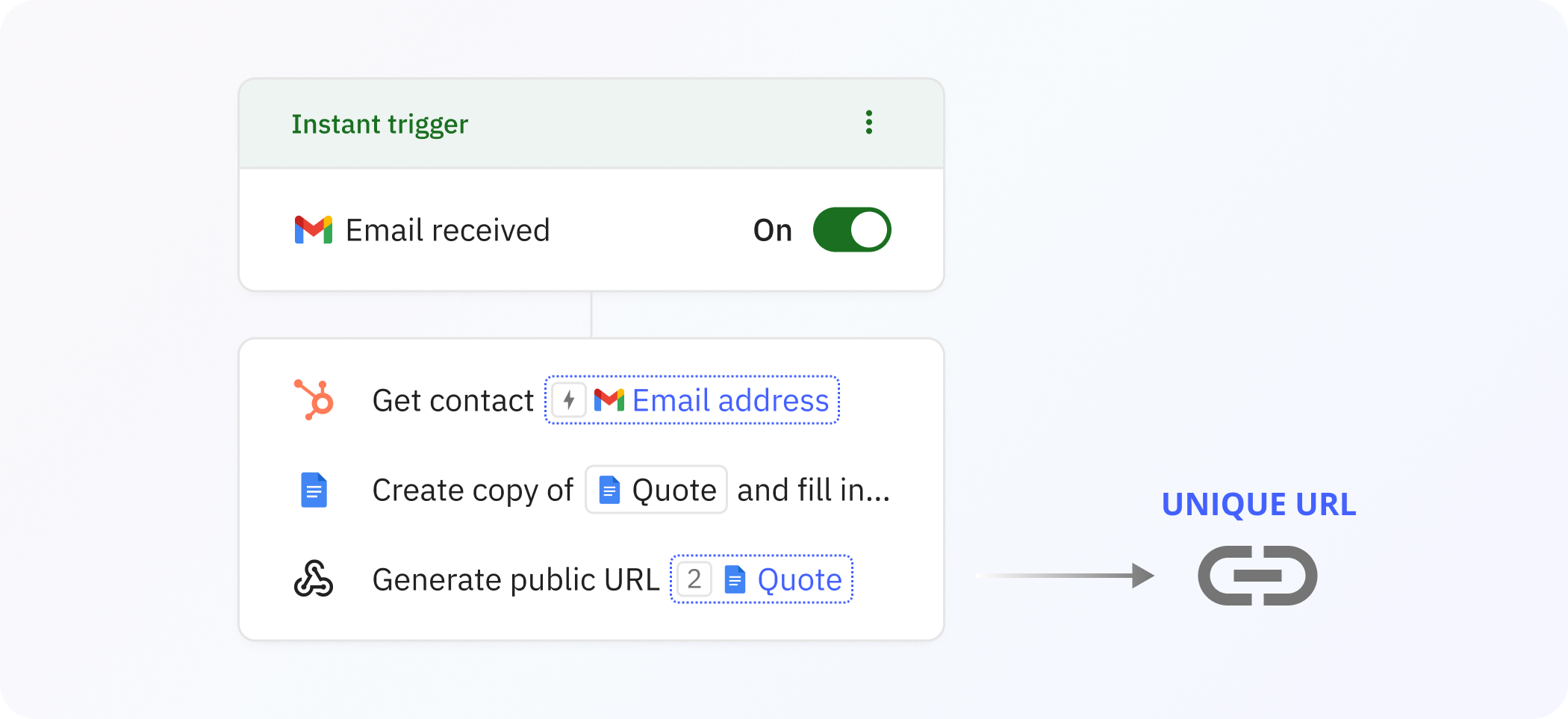Webhook Trigger
The Webhook Trigger in Relay.app lets you start (trigger) workflow runs when an external server makes an HTTP (GET or POST) request to a URL that’s uniquely generated for each workflow. Every time Relay.app receives a valid request on this URL, a run will kick off.
Relay.app makes it very straightforward to specify fields/parameters that can then be used across automated actions with other apps in your workflow. They may be specified either as a JSON body payload for POST requests, or URL parameters for GET requests. The best part is that Relay.app can automatically infer all parameters when you make a test request. Of course you can also specify them manually via an easy-to-use editor experience.
Webhook triggers are instant. This means that runs are started immediately when a valid HTTP request is received.
Demo video | Tutorial

Custom HTTP Request
The Custom HTTP Request action in Relay.app lets you make custom HTTP requests to any server out there. It's mostly used to initiate an action in another app or service, often to integrate with one of your company’s internal systems.
The payload of the server response of the URL that’s called may be used in the remainder of your workflow. For example, your system might return a success/failure confirmation of the action you requested, which you might then use to create conditional Paths in the remainder of your workflow.
The Custom HTTP Request action offers lots of flexibility: in addition to specifying the URL that should be called and its parameters, you can set the request method (POST, GET, PUT or PATCH), the encoding of the optional payload (JSON, Form), and even may define custom headers for the request.
Demo video | Tutorial

Wait for incoming Webhook
The Wait for incoming Webhook step functions in a similar way as other Wait and Human-in-the-Loop steps in Relay.app. Whenever a Wait for incoming Webhook step is encountered as part of a workflow run, the run is paused until an HTTP request is received on a URL that’s uniquely generated for that particular run + step combination.

Generate a public URL for any file
Sometimes you’ll need to make a file available via a publicly accessible URL, for example when an app your workflow is integrating with only accepts a URL to fetch data directly. The Generate public URL for any File step in Relay.app lets you generate a unique (temporary or permanent) URL for any file that’s used in your workflow, regardless through which app/integration the file was obtained.






